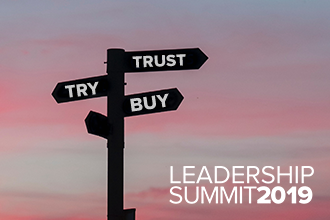John Jantsch discusses the customer journey – a key concept in marketing today that is constantly evolving. Understanding this concept positions a business to reach new levels of effectiveness by homing in on where they should be spending their time and effort when seeking and keeping customers. A bird in the hand is worth two in the bush – especially if it sings. And the bird is a customer. And the song is money.
So how do you get more songbirds landing in your palm and less pigeons pooping on your car? The key is in the customer journey. That means anticipating their flight south for the winter and having a bright-red bird feeder stocked with their favorite seed. Help them find your back yard, show them what’s on the menu and do it year after year until they’re routine visitors. Hopefully soon there will be so many songbirds that the pigeons will move somewhere else.
Avian analogies aside, the customer journey is a key concept in marketing today, and one that is constantly evolving. Understanding this concept positions a business to reach new levels of effectiveness by homing in on where they should be spending their time and effort when seeking and keeping customers.
The beginning of the customer journey often gets neglected, according to John Jantsch, founder of Duct Tape Marketing. He says that of the seven steps in the customer journey model his company teaches, people typically only focus on the two near the end of the journey: try and buy.
“Buyers now have access to oodles of information, so a lot of times they're pretty far down the track finding companies, products, and services before they ever reach out to somebody,” says Jantsch. “The key is to figure out how to get involved in that customer journey at a much earlier point. If a company is going to eliminate the competition and really stand out, it’s going to figure out how to get people who are trying to solve a problem, get in front of them, get them to realize that it’s got the answer and then build trust. If you do that part right in the whole marketing process, then you have a lot fewer questions in the try and buy phase. And you also probably attract more of your ideal clients.”
Jantsch says that he often hears from company leaders that if they just had more of the 10-20 percent of their customers whom they consider ideal, “life would be great.”
“When you really start drilling down, the right client has the right problem, the right budget, the decision-making authority and values what you do,” says Jantsch. “Once you know who the ideal client is, it gives you the ability to attract and teach somebody how to be ideal. Teaching what makes a great client for your business is actually half the battle of marketing.”
After defining the ideal audience, marketers can use content such as guides, blog posts, the content of the company website and social posts to give a voice to their company’s strategy. After generating and aligning content with the strategy, marketers should look at how the ideal customer might find their business.
When considering the customer journey, it is important to view how different platforms and pieces of content fit into the bigger picture, according to Jantsch.
“A lot of people want to look at Facebook, LinkedIn and email marketing as just another thing, but they all really link together,” says Jantsch. “For example, if I want to use Facebook, it's not just a matter of posting stuff there saying 'Here's our starter special' and hoping people respond to that. Instead, once I'm producing content, I run an ad on Facebook to drive somebody back to the comprehensive guide to home safety. When they get there, they're going to find great information and a reason to give me an email address, and all of a sudden, I've got a lead that I can continue to nurture. Our website, our content and Facebook advertising all worked together to get somebody on the customer journey looking at ways they can know, like and trust us. So maybe now they'll buy from us.”
Every part of a company’s online presence is important in guiding the customer journey earlier. When digital marketing tools are used in line with a company’s overall strategy, it gives the sales team and technicians a solid foundation for building even more trust and satisfaction with the customer.
According to Jantsch, it is vital that businesses remember that every stage of the journey is important.
“A customer’s goals and their questions change as they move along that journey, and you want to make sure that you're addressing that fact with all of your marketing.”
Learn about all seven steps of the customer journey with John Jantsch at the 2019 Leadership Summit in Austin, Texas, from January 28-31. Register today to secure your spot for education and networking with the industry’s top leadership talent!




